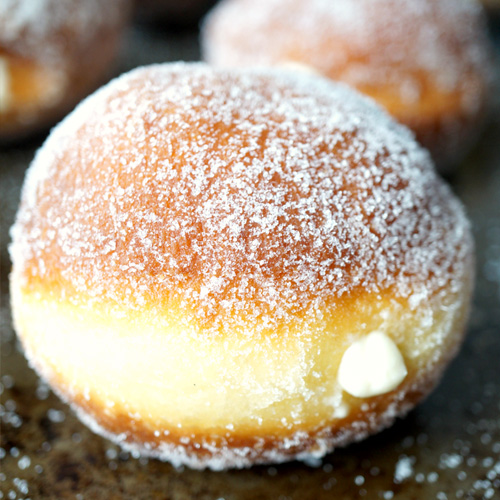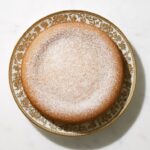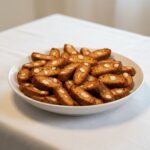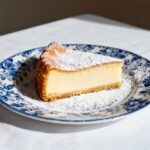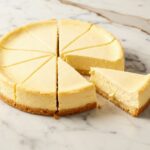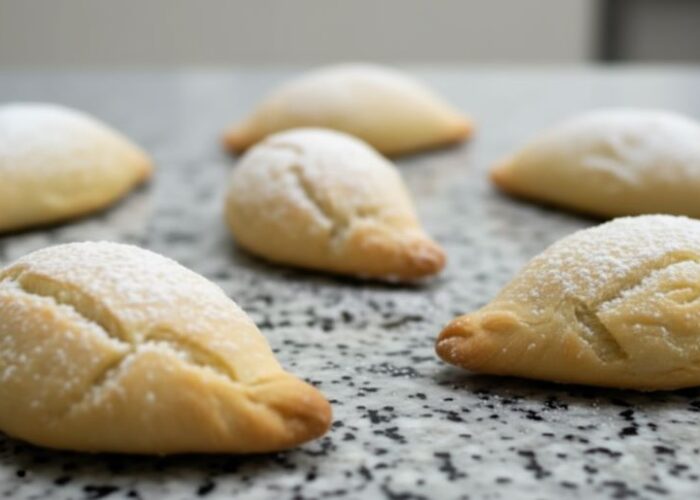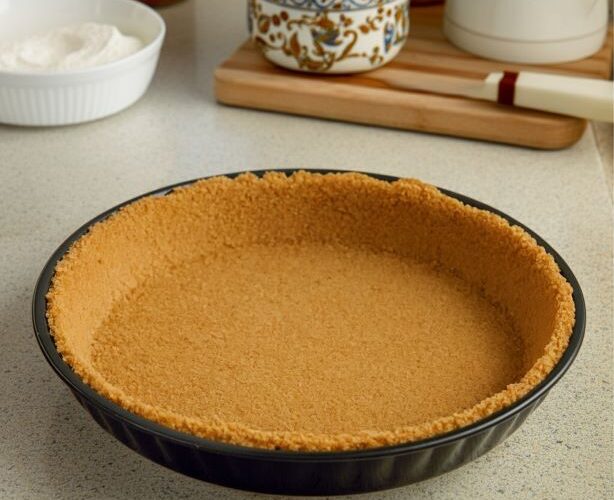
Bomboloni: The Classic Italian Filled Doughnuts
If you haven’t tried bomboloni yet, you’re missing one of Italy’s best treats. These soft, pillowy doughnuts hide sweet surprises inside. Locals and tourists love them alike.
Bomboloni (singular: bombolone) come from Tuscany. They differ from American doughnuts because they’re round with no hole in the center. After frying, people fill them with pastry cream, jam, or chocolate. The name comes from the Italian word bomba, meaning “bomb.” It’s a fun nod to their shape and the flavor burst you get with each bite.
You’ll find bomboloni in cafes, bakeries, and street fairs across Italy. Many enjoy them for breakfast or as an afternoon snack. They’re dusted with sugar and filled with rich flavors. Bomboloni are light and airy, never greasy. Their golden crust breaks to reveal a soft inside and a delicious filling—whether vanilla cream, Nutella, or fruit jam.
Making Bomboloni at Home
Making bomboloni at home is easier than it seems. The dough needs time to rise, but the ingredients are simple: flour, eggs, milk, sugar, yeast, and butter. With these basics, you can make soft, fluffy doughnuts just like an Italian bakery. After shaping and frying, fill them with your favorite sweet treats, custard, Nutella, or fresh jam. A dusting of powdered sugar finishes the perfect homemade bombolone.
Whether you’re wandering Florence or baking at home, bomboloni satisfy every sweet craving. Soft, golden, and filled with joy, these Italian doughnuts are unforgettable.
Filling Variations
One of the best things about bomboloni? You can fill them with just about anything sweet. From creamy classics to bold flavors, here are some delicious ideas to inspire your next batch:
Classic Pastry Cream (Crema Pasticcera)
The traditional choice—smooth, vanilla-scented, and rich. It’s the go-to filling in most Italian bakeries.
Nutella or Chocolate Hazelnut Spread
A crowd-pleaser. Warm it slightly before piping for easy filling and that irresistible gooey center.
Fruit Jam or Preserves
Strawberry, raspberry, apricot, or cherry jam all work beautifully. Choose one with a bit of tartness to balance the sweet dough.
Lemon Curd
For something bright and tangy. Pairs perfectly with powdered sugar and a bit of zest on top.
Coconut Cream
Add a tropical twist with a smooth coconut custard. Great with a sprinkle of toasted coconut.
Coffee Cream
Mix pastry cream with a shot of espresso for a mocha-style filling. Great for brunch or after-dinner treats.
Mascarpone Cream or Whipped Ricotta
Light and creamy, with a hint of sweetness. Add a little honey, orange zest, or even mini chocolate chips for texture.
Pistachio Cream
Luxurious and nutty, this Italian favorite is trending in bakeries and gelaterias everywhere. Try it if you want something unique.
Serving
Making bomboloni at home might sound intimidating, but it’s totally doable, even if you’re not an expert baker. The dough does take some time to rise, but the ingredients are simple: flour, eggs, milk, sugar, yeast, and butter. That’s it. With a little patience and some love, you’ll have soft, golden doughnuts ready to be filled with your favorite sweet filling, whether it’s classic custard, rich Nutella, or fruity jam. Top them with a dusting of powdered sugar, and you’ve got a warm, bakery-style treat right from your own kitchen.
Bomboloni are best enjoyed fresh and warm, just minutes after filling. The soft dough, sweet filling, and light sugar coating make them an irresistible treat at any time of day. Breakfast or Brunch: Pair with a cappuccino or espresso for a true Italian-style morning. Afternoon Snack: Enjoy with a cup of tea or a shot of Italian liqueur like limoncello.
Dessert: Serve bomboloni as a show-stopping finish to an Italian meal plate them with fresh berries or a dusting of cocoa powder for extra flair.
Storage
Bomboloni are best eaten fresh, but if you have leftovers, don’t worry—they can still be delicious the next day!
Unfilled Bomboloni:
Let them cool completely, then store in an airtight container at room temperature for up to 2 days. Reheat before filling for best results.
Filled Bomboloni:
Store in the fridge in a covered container for up to 2 days. Keep in mind that the filling can make the dough softer over time.
If you plan to make them ahead, fry and store unfilled bomboloni, then fill right before serving.
To bring back that fresh-from-the-fryer texture:
Oven or Toaster Oven:
Preheat to 300°F (150°C) and warm bomboloni for 5–7 minutes. This works best for unfilled ones.
Air Fryer:
Set to 300°F (150°C) and heat for 3–4 minutes. It keeps them crisp without drying them out.
Microwave (Not Ideal):
You can microwave filled bomboloni for 10–15 seconds, but they may turn soft or soggy.
Freezing is not recommended, as it can affect the texture and quality of both the dough and filling.
While fresh bomboloni are always best, you can freeze them to enjoy later. For the best results, freeze them before filling.
Freeze Unfilled Bomboloni:
Cool Completely:
Let the fried bomboloni cool to room temperature.
Flash Freeze:
Place them on a baking sheet in a single layer and freeze for 1–2 hours until firm. This prevents sticking.
Transfer to an airtight container or freezer bag. Label with the date and freeze for up to 2 months.
Reheating Frozen Bomboloni:
Oven:
Preheat to 300°F (150°C). Place frozen bomboloni on a tray and warm for 8–10 minutes, or until heated through.
Air Fryer:
Heat at 300°F (150°C) for 5–7 minutes.
Once warm, let them cool slightly, then fill and dust with sugar as usual.
Avoid freezing filled bomboloni. The filling can separate or become watery when thawed.

